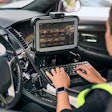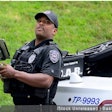The services are over, the media has largely left, those who paused in remembrance are now back at work. The 10th anniversary of 9/11 has come and gone, and in its wake there are concerns that the push for a nationwide public safety broadband network will pass as well.
I disagree.
If anything, there's a rising chorus of voices saying that this type of network is long overdue. I'm hearing the same message from police officers, firefighters, highway patrol, and elected officials: We need a coordinated response between agencies to better protect the public.
Public safety officials are increasingly aware of the disconnect between technology that's available to the average consumer and technology that's available to first responders. People are now asking me about emerging broadband technologies such as LTE (Long Term Evolution) and WiMAX. They no longer give me a blank look when I mention these terms.
On Capitol Hill, many lawmakers are listening and stepping up to help public safety get the wireless network and technology it needs to do a better job. As the 10th anniversary of 9/11 approached, Congress was routinely chastised by journalists for not following up on one of the key recommendations of the 9/11 Commission Report—the creation of a nationwide interoperable public safety network. In the months leading up to the anniversary, the House and Senate proposed their own versions on how to build such a network. While the frameworks differ significantly, sustained pressure on politicians to "get the job done" can hopefully result in a compromise.
First responders are the focus of another piece of legislation called the HEROES Act, which was recently introduced in the House. This bipartisan bill seeks to fund upgrades to first responders' communications equipment, and is in response to an FCC regulation requiring that public safety agencies upgrade their equipment and spectrum licenses before Jan. 1, 2013.
Businesses are also answering the call for public safety solutions, offering products designed specifically with first responders' needs in mind. Raytheon has expanded its public safety focus with a new Security and Transportation Systems business line that brings the power of a single network with limitless capability to public safety.
One thing we know as we look forward to the future is that change is certain. Moore's law says that technology grows exponentially, and it's expected to continue to do so until 2015 or 2020. This means that every technology will be replaced at some point. Public safety has no choice but to keep up with the times. We can't hold on to those analog radio handsets forever.
Related:














